Filter by
You must be a CTBUH Member to view this resource.

Central Plaza
Building
Completed
1992
Office
All-Concrete
373.9 m / 1,227 ft
78
3
237
39
130,140 m² / 1,400,815 ft²
You must be a CTBUH Member to view this resource.
You must be a CTBUH Member to view this resource.
Proposed
Construction Start
Completed
The Design Engineer is usually involved in the front end design, typically taking the leadership role in the Schematic Design and Design Development, and then a monitoring role through the CD and CA phases.
Other Consultant refers to other organizations which provided significant consultation services for a building project (e.g. wind consultants, environmental consultants, fire and life safety consultants, etc).
These are firms that consult on the design of a building's façade. May often be referred to as "Cladding," "Envelope," "Exterior Wall," or "Curtain Wall" Consultant, however, for consistency CTBUH uses the term "Façade Consultant" exclusively.
Material Supplier refers to organizations which supplied significant systems/materials for a building project (e.g. elevator suppliers, facade suppliers, etc).
Material Supplier refers to organizations which supplied significant systems/materials for a building project (e.g. elevator suppliers, facade suppliers, etc).
You must be a CTBUH Member to view this resource.
Usually involved in the front end design, with a "typical" condition being that of a leadership role through either Schematic Design or Design Development, and then a monitoring role through the CD and CA phases.
The Design Engineer is usually involved in the front end design, typically taking the leadership role in the Schematic Design and Design Development, and then a monitoring role through the CD and CA phases.
The main contractor is the supervisory contractor of all construction work on a project, management of sub-contractors and vendors, etc. May be referred to as "Construction Manager," however, for consistency CTBUH uses the term "Main Contractor" exclusively.
Other Consultant refers to other organizations which provided significant consultation services for a building project (e.g. wind consultants, environmental consultants, fire and life safety consultants, etc).
These are firms that consult on the design of a building's façade. May often be referred to as "Cladding," "Envelope," "Exterior Wall," or "Curtain Wall" Consultant, however, for consistency CTBUH uses the term "Façade Consultant" exclusively.
Material Supplier refers to organizations which supplied significant systems/materials for a building project (e.g. elevator suppliers, facade suppliers, etc).
Material Supplier refers to organizations which supplied significant systems/materials for a building project (e.g. elevator suppliers, facade suppliers, etc).
13 October 2016 - CTBUH Research
25 February 2016 - CTBUH News
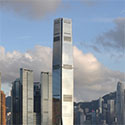
20 October 2016 | Hong Kong
Thursday October 20, 2016. Hong Kong, China. Tony Tang of Sun Hung Kai Properties Limited presents at the 2016 China Conference Plenary 6: Hong Kong...
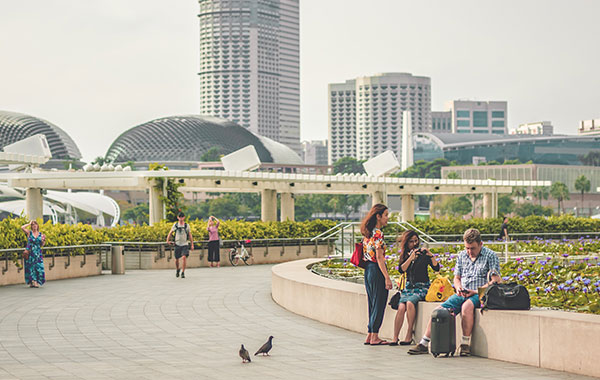
30 January 2020
Yu Ye, Zhendong Wang, Nannan Dong & Xihui Zhou, Tongji University
Tall buildings unquestionably need to improve their impact on the urban habitat. A human-focused approach to measuring the social impact of tall buildings’ ground conditions,...
Central Plaza is located in the Wan Chai commercial area in the heart of Hong Kong’s central business district overlooking the harbor. In order to maximize views of the nearby harbor, the building was designed to be triangular in plan, with two legs of the triangle facing towards the water. With this design, two-thirds of available office space has harbor views, while the final third enjoys views of the mountains and surrounding city. Normally, many would refrain from a triangular plan as it creates too many dead corners; however, in this instance, designers rationalized internal floor space by cutting off the corners of the triangle. These truncated corners provide more workable internal space and avoid the negative connotations of sharp corners, in keeping with principles of feng shui.
The building’s façade is clad in insulated glass of three different colors. Gold and silver coated glass is used in a vertical and horizontal pattern juxtaposed with a ceramic-painted glass to create a shimmering effect. The top of tower has a central mast with three legs at its truncated corners. The crown of the building is topped with a special light feature that tells the time of day with changing colors. Along with the “Lightime” crown feature, the building is illuminated by gold-colored neon-accents built into the façade.
As its name suggests, Central Plaza is intimately connected to the surrounding urban fabric. A covered pedestrian walkway links the building to nearby bus, rail, and ferry terminals, as well as a convention center and government building. Its innovative design, as well as its prominent location, has made Central Plaza an integral part of Hong Kong’s built environment.

20 October 2016 | Hong Kong
Thursday October 20, 2016. Hong Kong, China. Tony Tang of Sun Hung Kai Properties Limited presents at the 2016 China Conference Plenary 6: Hong Kong...
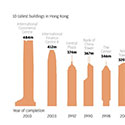
20 October 2016 | Hong Kong
Thursday October 20, 2016. Hong Kong, China. Eric Ma of Hong Kong Special Administrative Region presents at the 2016 China Conference Plenary 6: Hong Kong...

19 September 2012 | Hong Kong
This presentation discussed an advanced engineering evaluation using nonlinear analysis to improve structural silicone glazing (SSG) design in high performance curtain wall systems. High wind...

30 January 2020
Yu Ye, Zhendong Wang, Nannan Dong & Xihui Zhou, Tongji University
Tall buildings unquestionably need to improve their impact on the urban habitat. A human-focused approach to measuring the social impact of tall buildings’ ground conditions,...
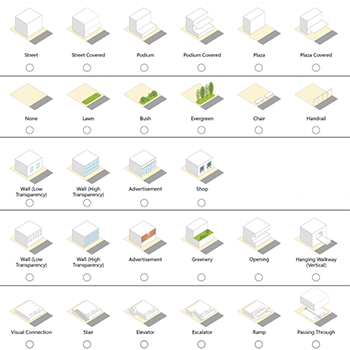
14 March 2019
Xihui Zhou & Yu Ye & Zhendong Wang, Tongji University
After decades of high-speed development, designing tall buildings as critical components of urban habitat, rather than simply standing aloof from their environments, has become an...
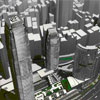
16 October 2005
John W. K. Luk, Julia M.K. Lau & Tim M.T. Mak; Lau Sun Hung Kai Properties
The paper goes over Sun Hung Kai Properties Group as the developer/co-developer of three major tall building commercial complexes in Hong Kong: the Central Plaza,...
13 October 2016
The Council is pleased to announce the Top Company Rankings for numerous disciplines as derived from the list of projects appearing in 100 of the World’s Tallest Buildings.
25 February 2016
CITAB and CTBUH are pleased to announce the award recipients for the inaugural CITAB-CTBUH 2016 China Tall Building Awards.
Subscribe below to receive periodic updates from CTBUH on the latest Tall Building and Urban news and CTBUH initiatives, including our monthly newsletter. Fields with a red asterisk (*) next to them are required.
View our privacy policy